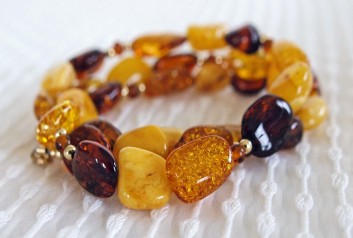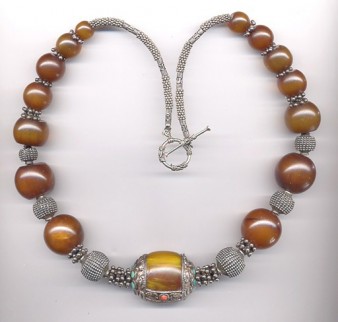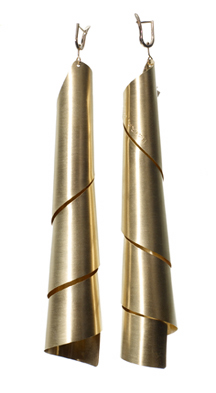Strolling past the booths of an outdoor craft festival recently, I stopped to admire a chunky beaded necklace labeled “Copal Amber,” the word “amber” in bold. “I thought copal was different from amber,” I said to the man behind the display. “Younger, isn’t it?”

The vendor grunted. “If you call thousands of years young,” he said, his voice dripping with sarcasm, “Thousands vs. millions. It’s the same material though.”
I smiled and told him I knew some gemologists who would disagree. He looked at me more closely. “Nobody here cares whether it’s amber or copal,” he said, looking around at the unsuspecting shoppers strolling by in the sunshine. “They’re just looking for something pretty.”
Why should they care if they don’t know to ask? I can pretty much guarantee if one of them expressed interest in this “copal amber” necklace, this guy was not going to volunteer the information that the copal beads in his necklaces weren’t really amber.

Let’s get something straight: Copal is not amber. Labeling it amber is a fraudulent claim. In the world of geology – and gemology – the difference between material that’s been in the ground for thousands of years vs. millions can be pretty significant. Copal and amber, for example, are both resins, but copal is far more common than fossil amber and, therefore, doesn’t have the same commercial value.
You’ll often find copal (labeled amber) with amber-like inclusions on sites like eBay; some of those inclusions would be rare and quite valuable in real amber. In copal, not so much. Where jewelry is concerned, copal is often not as durable as amber – more likely to develop surface crazing after a few years.

At the “copal amber” booth, I mentioned something I’d seen at the Tucson Gem Shows, where the copal vs. amber controversy is old hat. The bored disdain vanished and the vendor stepped closer. Suddenly, it was like I was at the AGTA show, wearing my little press badge. He pointed out that his actual amber jewelry—indicating some necklaces with the familiar transparent honey-colored beads—reflected the price difference because, of course, “it’s older and more valuable.” Uh-huh.
I know most folks who make jewelry with copal already know this, but allow me to suggest to those who don’t: Label your copal “copal.” Follow the example of the lovely and properly-labeled copal-and-amber necklaces pictured above (and sold on Etsy and All Necklaces). You can mention copal’s unique characteristics – color, weight, price benefit – even its similarities to amber, but you shouldn’t have to call any material something it’s not in order to sell it. One more thing: It’s dangerous to assume every customer who finds you online or at a public fair will be uninformed.
To jewelry lovers who, like me, find yourselves attracted to unusual materials, I have another piece of advice. If you see a word or a material you don’t recognize, ask. Don’t allow yourself to be intimidated until you get a straight answer. When you buy something at a craft show, get the contact information of the vendor and make sure it says on the receipt exactly what it said on the display label. As in “copal amber.” Just in case you get home, Google it, and find yourself with a case of buyer’s remorse.
Related Products


